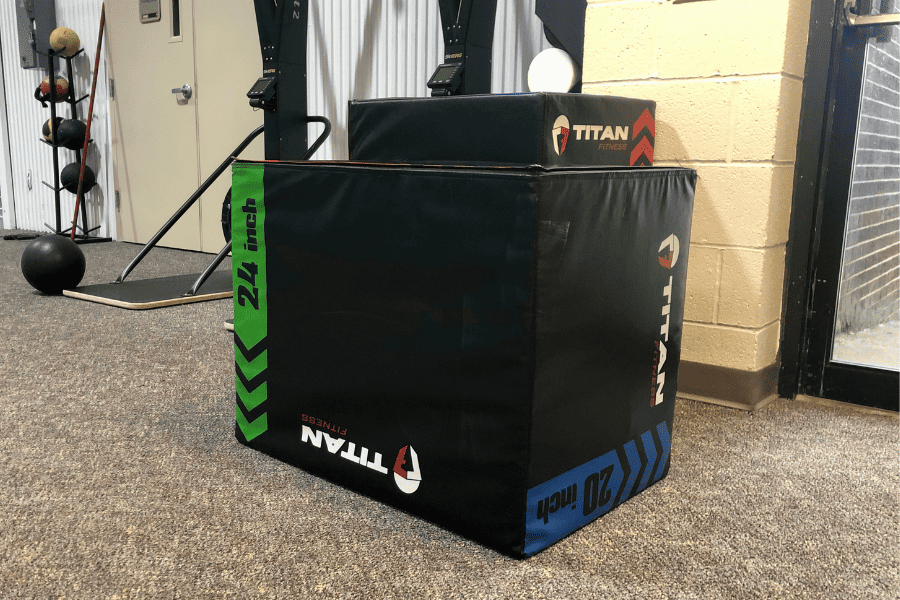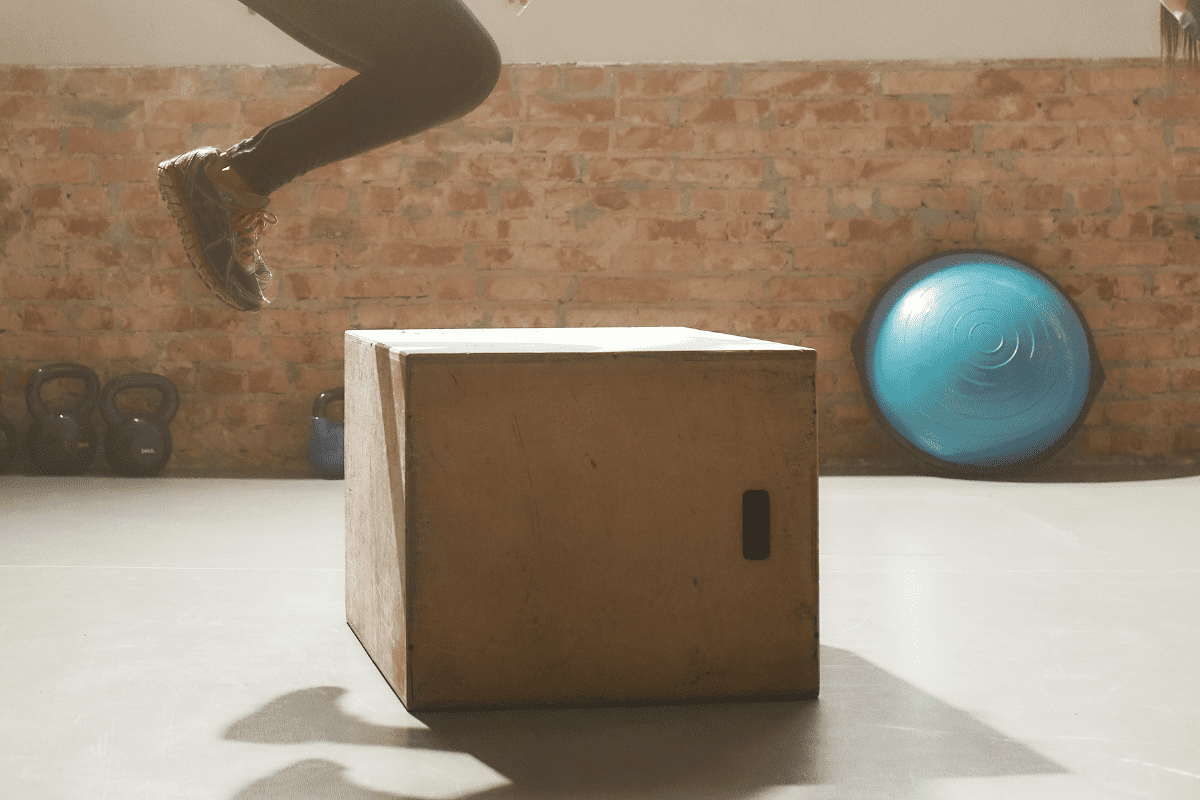Plyo Boxes: Foam or Wood (Which is Better?)
Plyo boxes aren’t generally one of the first things you’ll buy for your garage gym, especially if you’re working on a budget. But, a Plyo Box is generally a purchase most of us make sooner or later.
It’s even more likely you’ll want one if you’re an athlete (or have an athlete at home) and/or you’re following CrossFit.
As an athlete, Plyo Boxes are great for power development. If you do CrossFit, you’ll find box jumps in a workout pretty much on a weekly basis.
In this article, I’ll discuss the benefits of using Plyo Boxes and whether or not you’re better off buying a Soft Foam Plyo Box or Wood Boxes.
This article contains affiliate links. If you use these links to make a purchase I may earn a commission. Thanks!
What are the Benefits of a Plyo Box?
First, before we get into Foam or Wood, let’s discuss exactly what the benefits are of a Plyo Box. Having a good understanding of what you should expect to get out of your Plyo Box will make the decision of what kind of box to get much easier.
I think we’re all pretty familiar that Plyo Boxes are used to jump on.
In a nutshell, training the body to explosively triple extend through the hips, knees and ankles when jumping up to a box helps develop the body to become more explosive.
So why not just jump up in the air?
After all, you can save money and space by just doing vertical jumps, right? No equipment necessary for that.
What makes a Plyo Box an effective training tool is not so much the jumping that it demands, but more so the landing that it provides.
What goes up must come down, and when you come down after jumping you have to absorb all of that force. There is nothing inherently wrong with that until you start increasing the volume.
Athletes don’t just workout, they also practice and play their sport which may already include a lot of jumping. Some CrossFit workouts have as many 50 box jumps in a workout.
When you start accumulating all this volume, it can start to wear and tear on your arches, ankles, knees and even back. Especially for larger athletes (and individuals) like football players.
Plyo Boxes cut the fall before landing almost entirely. Less fall equals less buildup of force and is much easier on your joints. Then you’re able to step down off the box.
Now that we know why we need a Plyo Box – what kind of Plyo Box is best? Let’s look at two of the most popular styles of Plyo Box: Soft Foam Boxes and Wood Boxes.
Foam Plyo Boxes

Types of Foam Boxes
The two main types of Foam Boxes are boxes with varying sides and stackable boxes.
Boxes with varying sides (like the Titan Box pictured above) seem to be becoming more and more popular and with good reason.
By making each side a different length, you can get three different heights all in the same box. These three heights will cover the needs of 99% of the people buying a Plyo Box.
The other style is getting stackable boxes. Here you get multiple boxes of different heights that can be interchanged and connected with heavy Velcro across the bottom and top of the box. I’ve used boxes like this at multiple schools I’ve worked out and they worked great.
Foam Boxes: Pros and Cons
I’m old enough to remember a day before Soft Foam Plyo Boxes. Even when I first started coaching at the University of Tennessee, we only had wood Plyo Boxes.
I’ve seen a few people over the years lose every inch of skin along their shin bone because they missed the front of the box with their foot.
This is basically why Soft Foam Plyo Boxes were invented. Safety.
This is why I would highly recommend beginners and especially young athletes to purchase a Foam Plyo Box. You can land correctly on a Wood Box 1000 times and on the 1001 jump end up with a horrific injury.
If it’s a young athlete, this could scar them both physically and mentally for life. In my opinion, this is easily avoidable by simply getting a soft box.
If you’re an adult doing CrossFit and think, “I’d never make that mistake.” That’s easy to say, but when you’re 20 minutes into a grueling workout and your legs are crazy fatigued – it’s a lot easier than you think to make that mistake.
Does this mean Foam Plyo Boxes are the best fit for everyone? Not necessarily.
Wood Plyo Boxes

Types of Wood Boxes
Wood Plyo Boxes come in a few different forms.
First, there are the large square boxes that are built specifically for box jumps in mind. Also, just like with foam boxes, companies make boxes now where each side is a different height giving you three box heights in one.
Stackable Wood Plyo Boxes include inserts on the top that allow you to stack boxes to change heights.
While not exactly a “Plyo Box”, you can also use Lifting Blocks. Lifting Blocks are Wood Blocks used for Olympic Lifts that are also generally stackable as well to achieve different heights. This is actually what I currently use for my Box Jumps and something I’d recommend if you do a lot of Olympic Lifting to get maximum value.
Wood Boxes: Pros and Cons
I know I’ve already painted Wood Boxes as an evil death trap, but that doesn’t necessarily have to be the case.
If you’re an experienced lifter, you can use Wood Boxes without an issue if you always stay focused and respect every jump.
Injuries with box jumps typically come down to one of two things: jumping on a box higher than you should be or jumping on a box in a high state of fatigue.
If you’re smart about choosing your box height and staying focused, Wood Boxes do have some advantages over Foam Boxes.
If you’re doing CrossFit workouts, you can move more quickly between jumps with a wood box.
Wood Boxes can also add exercises to your gym repertoire. Exercises like Step-Ups and Single Leg Step Downs work great with wood boxes.

Get Shredded… For Free
Get a free workout Monday through Friday, posted right here on Horton Barbell. These workouts are designed to help you get strong, in shape and look great at the beach!
Foam or Wood: Which One is Best?
Whether you decide to get a Foam Box or Wood Box really should come down to experience and preference.
If you’re relatively new to using a Plyo Box for box jumps then I highly recommend getting a foam box.
If you’re more of an advanced lifter, then it really boils down to your preference. You can get a Wood Plyo Box if you feel that’s going to fit your needs better, but there’s still nothing wrong with still going with a Foam Box.
Bonus Tip
- If you’re using your Plyo Box for CrossFit workouts, make sure to get height(s) that correlate with the workouts you’ll be doing (most common height for CrossFit workouts is 24″ (men) and 20″ (women).

